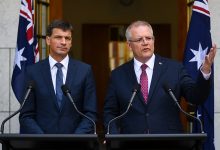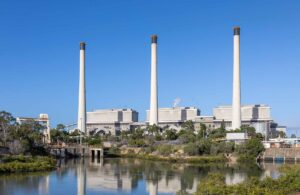Last weekend’s G7 summit has turned out relatively similar to many of these types of summits – relatively unremarkable. The seven nations gathered, and several invited guests including Australia, had a series of meeting on major global issues that involved plenty of posturing and not a particularly overwhelming amount of substance.
As I wrote last week, Morrison has been attending these global meet-ups with an increasingly hunched posture on climate and energy. The characteristic defensiveness was on full display, during a press conference on Sunday, and Morrison pulled out all of the easily-predicted lines:
“Australia has cut emissions by over 20% since 2005. Now that exceeds many of those that will sit around that table today. It’ll exceed many who have made commitments for far greater than that in the future but those countries as yet have not achieved that”
As I wrote last week, this is Morrison’s staffers and wonks using misleading comparisons between countries; specifically in the land-use sector, which has seen its data revised massively over the past years in favour of the government. Look at industrial sectors only, and Australia comes dead last by a comfortable margin.
“See, performance should count as much as ambition. Australia’s performance makes clear that when we make a commitment, we keep it and we deliver on it. And I think that ambition is very important – that is why I’ve said what I’ve said in terms of what we would hope to achieve in terms of a net zero or carbon neutral economy”
In a sense, this is true. And it’s very straightforward to gauge ‘performance. Australia’s Paris agreement target was set in 2015, and since then, we have known that it must be increased to match a 1.5C ambition (from 26% to around 60-70% by 2030). So, how has Australia’s government performed?
After signing the Paris agreement in December 2015, Australia’s emissions should have begun in line with the then-new 26% by 2030 target. They did not – they have only dipped below this trajectory thanks to the impacts of COVID19, and they are forecasted to climb back above within a few years by the government’s own department – putting Australia comfortably off-track to achieve these 2015-era targets, and very much off track to achieve a 1.5C compliant, net zero by 2050 trajectory.
Hydrogen and CCS as tactical empty promises
Some extremely vague technology partnerships are about the most Australia’s PM can claim from the G7 meetings, each hand-waving away concerns about climate and emissions with hydrogen-fuelled technobabble. A joint statement with Germany’s Chancellor Angela Merkel and a statement about partnerships with Japan both avoid any reference to substantial targets, exact emissions reductions numbers or short-term changes and actions. Awkward and jarring statements, like “Japan reaffirms its commitment to transition to net zero emissions by 2050. Australia reaffirms its commitment to achieve net zero emissions as soon as possible, preferably by 2050”, abound.
Buried in the statement on Japan is an open door to allow for high-emissions production of hydrogen using fossil fuels, with a vague promise of “substantial carbon capture, utilisation and storage (CCUS)”. How much is that? Considering how catastrophically CCUS is currently overblown, it could be nearly nothing and still be described as “substantial”.
A brilliant example of this is the ‘Hydrogen Energy Supply Chain’ (HESC) project, which is specifically named in Morrison’s weekend press release.
This project plans to take some of the world’s most wildly carbon intensive substances – brown coal from the Latrobe Valley – and burn enormous quantities of it to make hydrogen to ship to Japan. That comes paired with an extremely improbable (this is being kind) promise to capture all of the carbon involved with this in a Victorian CCS project that is yet to capture a single megagram of carbon after more than a decade.
Limited outcomes but coal’s days are numbered
Australia’s plan to simply continue spinning the wheel was not unique at the G7. “In the face of a perfect storm of planetary crises – the world’s richest democracies have responded with a plan to make a plan” said Laurence Tubiana, one of the architects of the Paris Climate agreement. A promise made long ago for rich nations to raise $100 billion in finance for poorer countries to take up clean energy remains un-met. Any clear and specific commitments to phase out fossil extraction and burning activities, by fuel or sector, were not made. No phase-out dates for the sales of combustion engines or the shut-downs of coal plants.
“G7 leaders have missed the boat in Cornwall on climate action and setting up success at COP26. Despite talking about the scale of the crisis, few concrete outcomes have been achieved”, Catherine PEttengell, Climate ACtion Network UK Interim Director told Megan Rowling, at Reuters.
However, the agreements that were made, while insufficient, were not nothing. A strong commitment to end the financing of thermal coal power generation this year was made.
The end to international coal finance by end of 2021 includes "Official Development Assistance, export finance, investment, and financial and trade promotion support."
Japan has 2 coal projects left in its finance pipeline. It should stop them now. There will be no others.
10/
— Chris Littlecott (@chrislittlecott) June 13, 2021
“Our immediate assessment is that the G7 have taken good strides forward on each of these coal priorities. There is much more to do, but this package is a strong foundation to build from”, said E3G’s Chris Littlecott.
Most relevant to Australia is this phrase, in the communique: “Domestically, we commit to achieve an overwhelmingly decarbonised power system in the 2030s and to actions to accelerate this”.
This is notable specifically because Japan is a key customer for two of Australia’s biggest exports: coal, and gas. Australia’s thermal coal exports, in particular, are 41% of total thermal coal export value. LNG exports to Japan are 42% of total LNG export value. Completely decarbonising the country’s power sector in the next 10 to 20 years means both export industries will plummet.

Of course, Japan’s leadership is not too keen on a rapid coal phase-out. Japan and the US were named as two key holdouts in setting clear end-dates for the burning of coal for power generation, by Politico’s Karl Mathisen (Germany insisted it had no role in blocking the setting of a coal phase-out date). Part of this is concern – perhaps somewhat justified – over the risks of a mismanaged transition away from coal. “Aware of the potential political and social consequences of a mismanaged transition from coal, Canada, Germany, the U.K., and the U.S. launched a $2 billion fund to support new industries and retrain workers in developing countries”, wrote Mathisen.
Australia is miles and miles away from these conversations about managing and accelerating the end of coal, even when its leader travels over the world to be right there among it.








